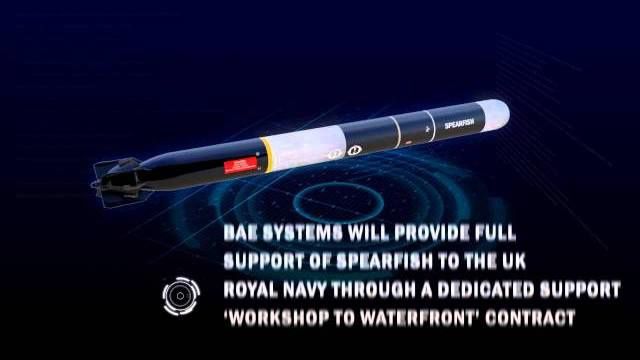
CANBERRA, Australia, Sept. 1 (UPI)
Australia's Defense Department hit back at criticism over its MU90 lightweight torpedo purchase from the weapon's French and Italian manufacturers.
A written statement by the Defense Ministry said all essential documentation from the manufacturers is in English and not, as reported by Australian media, in French or Italian only.
An article in some Fairfax Media newspapers and "more widely reported in the electronic media" contains "information that is wrong and misleading," the ministry said.
The Age newspaper in Melbourne, under the headline "Navy at sea over French manual," savaged the government for going out to tender for a translation of the manufacturers' documents despite having spent several hundred million dollars on the much-delayed project.
The Age said the deal has dragged on 13 years, will cost $655 million and has been condemned by the government auditor.
The article said the Defense Department will pay $110,100 for the translation service and cover the cost of flights and accommodation the tender winner.
"Buy flat-pack furniture from a well-known Scandinavian chain store and you can be sure the instructions will be in English," the article said. "But spend hundreds of millions on European-built torpedoes for your navy and apparently that is not the case."
However, the Defense Department said "as a condition of contract, all key project documentation including technical instructions from the supplier has been delivered in English."
What is in need of translation is "additional test data from these countries as a way to reduce costs and minimize the number of formal ship trials for the Australian MU90 program" before the weapon is commissioned, the department said.
The statement noted that Australia is getting test-firing data ordinarily not included in such contracts but will save Australian taxpayers a lot of money.
"To date the French and Italian navy testing programs have involved the firing of over 200 MU90 torpedoes. It is the reports and data from these tests that is in French and Italian and needs to be translated into English," the Defense Department said in its statement.
Apart from Australia, the MU90 anti-submarine torpedo is used by the navies of Germany, France, Italy, Denmark and Poland. It is designed to outperform the U.S.-built Mark 46, torpedo designed by Alliant Techsytems.
The MU90 manufacturer, EuroTorp, is a consortium formed in 1993 by French and Italian defense companies specifically to design and build a new generation lightweight torpedoes.
EuroTorp companies are Whitehead Alenia Sistemi Subacquei, which has a 50 percent stake, DCN International with a 26 percent stake and Thales Underwater Systems, owning 24 percent.
The Defense Department statement also noted that the MU90 contract is an Acquisition Project of Concern. Being on the Project of Concern list -- set up in 2008 -- means the government is aware of escalating costs and lengthening delivery dates and is working with contractors to get the contract back on track.
In May, a report by the Auditor General blasted Defense for badly managing the torpedo purchase which, even though signed in 1998, has no firm delivery date.
'Planning and management was inadequate,'' the Auditor General said.
There had been ''an underestimation of … risk'' even though almost $400 million has been spent.
The project ''will not deliver the capability originally sought by the Australian Defense Force (military), with uncertainty surrounding what will be delivered."
The audit report said the government knew so little about the torpedo when they bought it, they ''believed the MU90 to be an off-the-shelf acquisition … already in service with the other navies. This was not the case.''




























